Click on images to enlarge
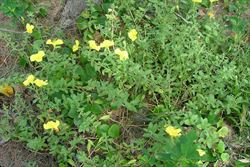
infestation (Photo: Sheldon Navie)
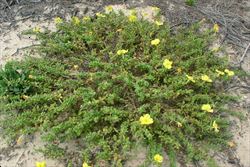
spreading habit (Photo: Sheldon Navie)
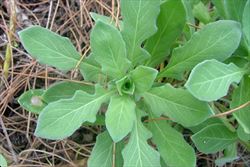
lower leaves (Photo: Sheldon Navie)
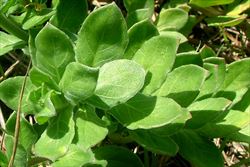
upper leaves (Photo: Sheldon Navie)
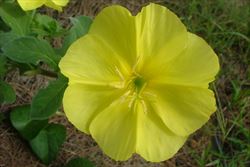
close-up of flower (Photo: Sheldon Navie)

immature fruit (Photo: Sheldon Navie)
Scientific Name
Oenothera drummondii Hook. subsp. drummondii
Synonyms
Oenothera drummondii Hook.
Family
Onagraceae
Common Names
beach evening primrose, beach evening-primrose, beach primrose, coastal evening primrose, evening primrose
Origin
Native to northern Mexico and south-eastern USA (i.e. Florida, Texas, southern Louisiana, South Carolina and south-eastern North Carolina).
Naturalised Distribution
This species is widely naturalised in the coastal districts of eastern and south-western Australia. It is common in south-eastern Queensland, from the New South Wales border north to Fraser Island, and in the coastal districts of central and northern New South Wales, chiefly north from the Sydney region. It is less common in the coastal districts of southern New South Wales and south-western Western Australia. Also naturalised on Lord Howe Island and locally naturalised in south-eastern South Australia.
Notes
Beach evening-primrose (Oenothera drummondii subsp. drummondii) is regarded as an environmental weed in eastern Queensland and south-western Western Australia, and as a potential environmental weed in South Australia. It is thought to have been introduced in ship ballast water and is primarily a weed of coastal environs (i.e. beaches and sand dunes), including many coastal reserves.
There is conflicting opinion to the environmental impact of this species in eastern Australia. During one recent study, beach evening-primrose (Oenothera drummondii subsp. drummondii) was listed in the top 100 most invasive plant species in south-eastern Queensland. Other authors do not consider it to be a serious weed because it does not significantly displace native plants, and contributes to the stabilisation of sand dunes.
However, beach evening-primrose (Oenothera drummondii subsp. drummondii) is listed as a moderately high priority species in the Environmental Weed Strategy of Western Australia. This species grows on coastal dunes and along roadsides in between Jurien Bay and Bunbury, and is especially common and widespread in the Perth metropolitan area. It is also listed as a priority weed in the Henley Beach to Tennyson Coastal Reserve in Adelaide in south-eastern South Australia, where small infestations have recently become established and pose an unknown level of threat.

